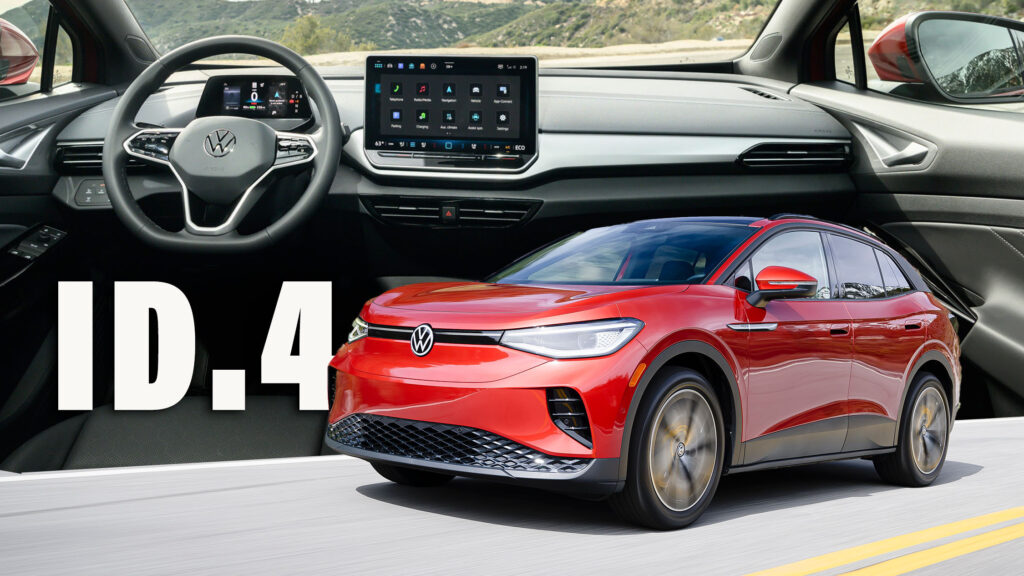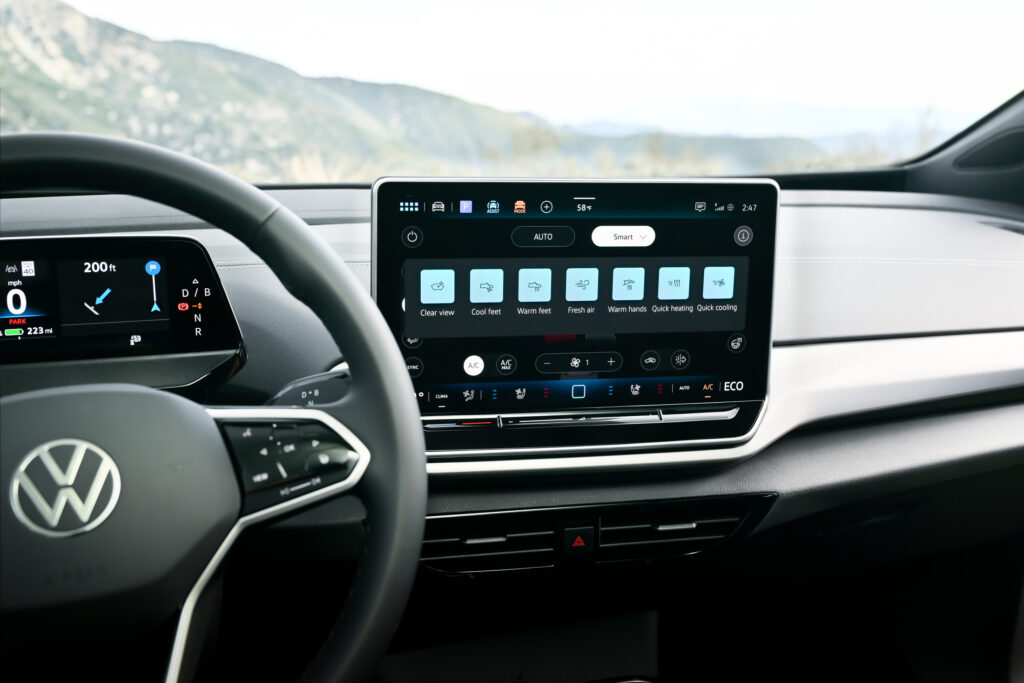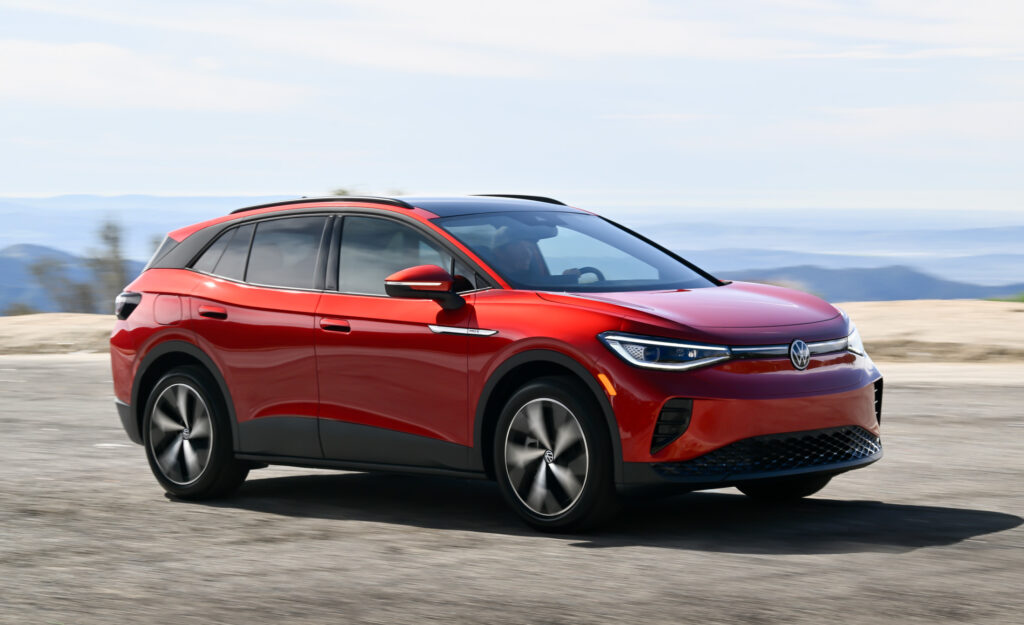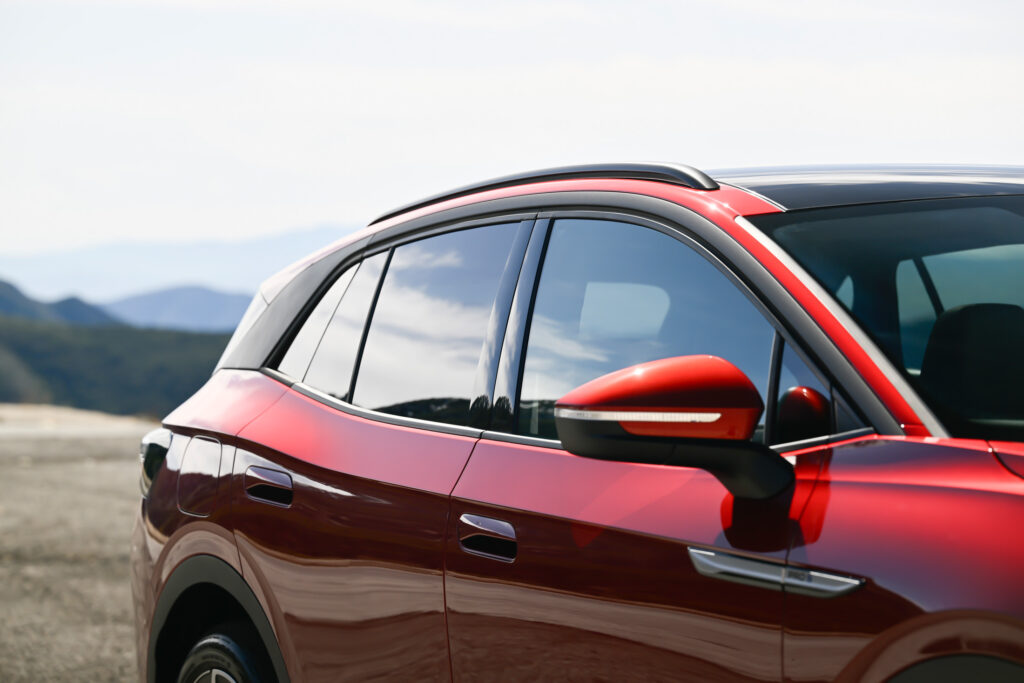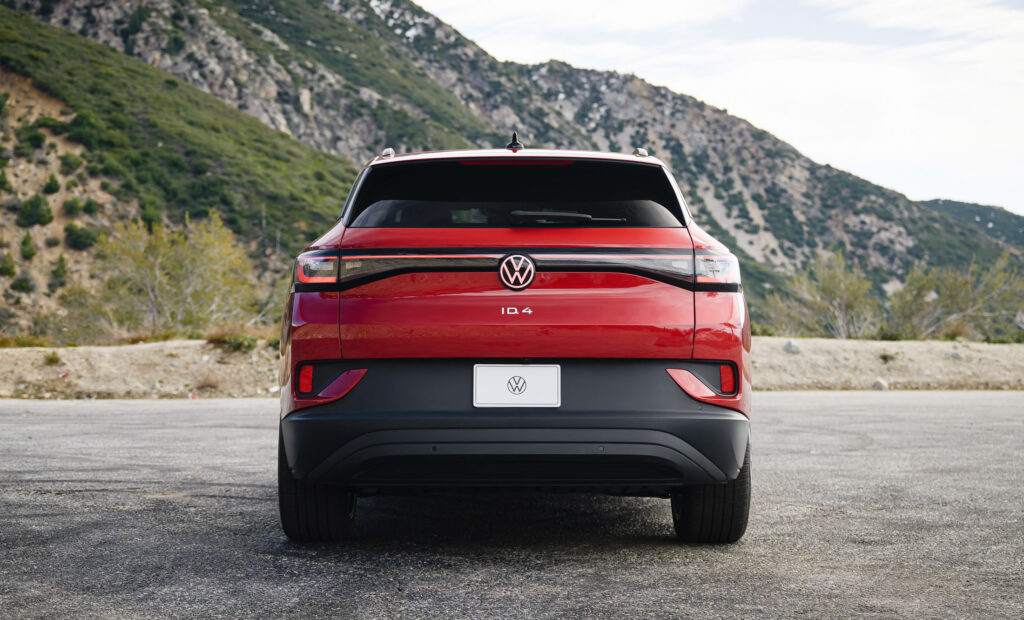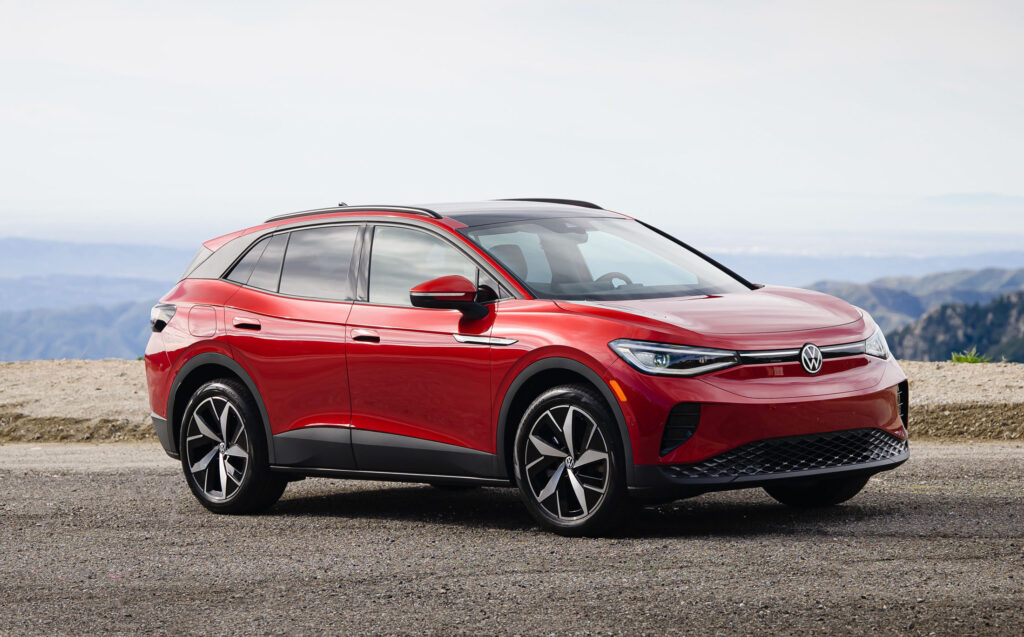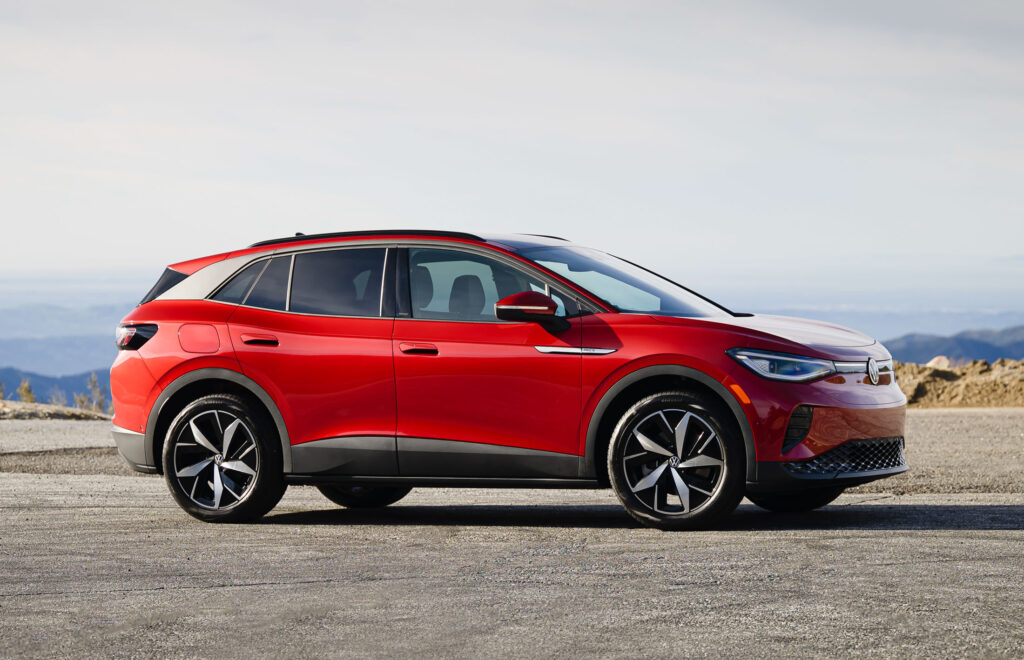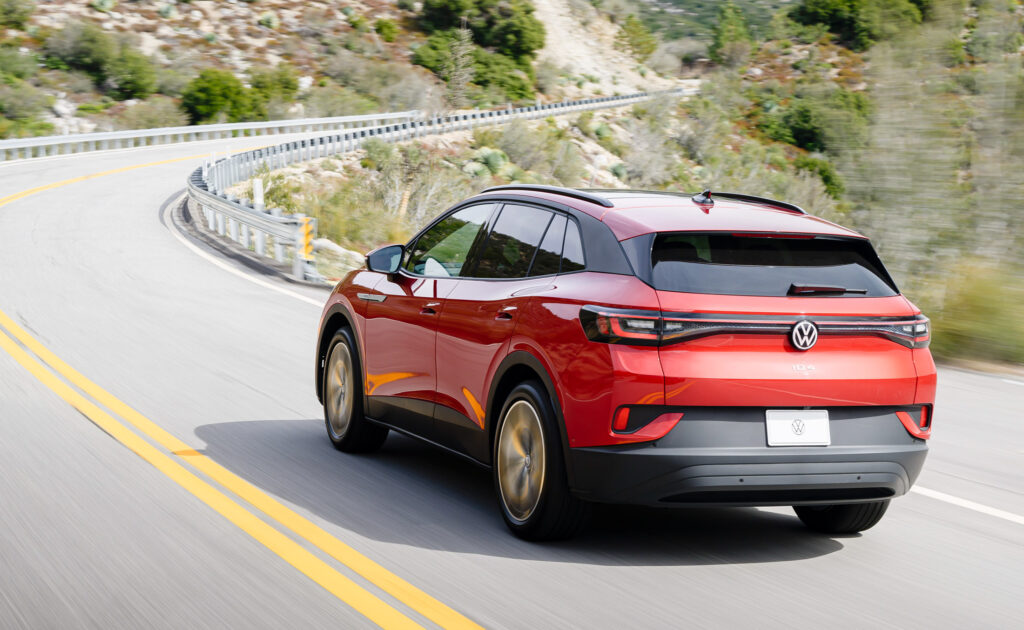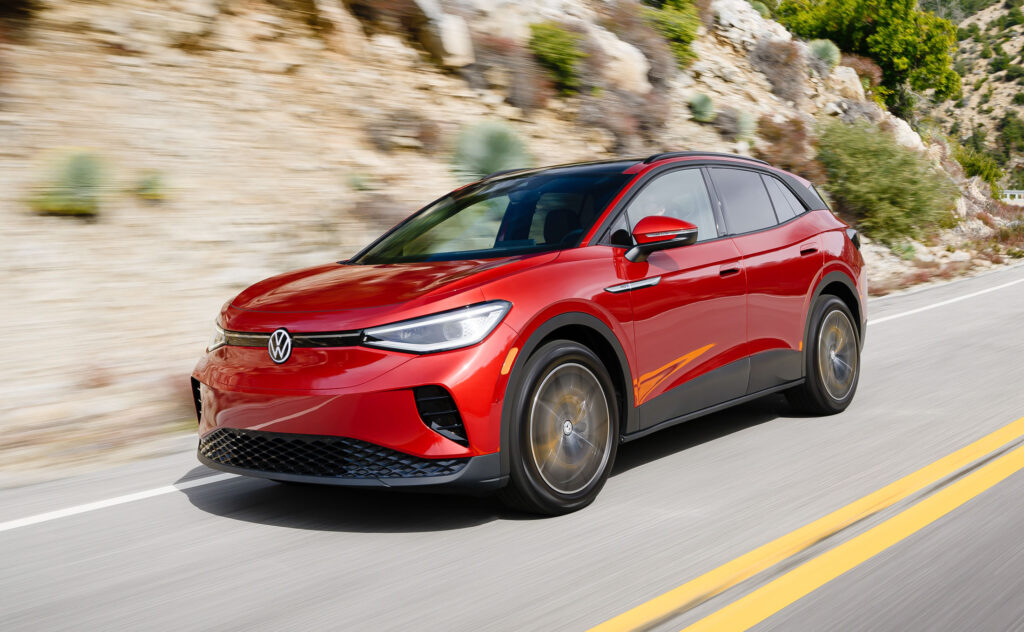This year’s VW ID.4 might not look much different from last year’s but don’t judge an EV by its steel, glass, and plastic cover. The 2024 version is usefully improved under the skin, bringing upgrades to the power output and interior that ought to make it far more appealing to buyers.
We got a taste of those new upgrades when VW revealed the enhanced ID.4 for Europe last fall, and now the North American cars built in Chattanooga, TN, have embraced the same mods. The biggest of those is a huge boost in power for the single motor cars from 201 hp (204 PS) to 282 hp (286 PS). That new output comes perilously close to the 295 hp (299 PS) served up by the old bi-motor, AWD ID.4, so that’s also received an upgrade to 335 hp (340 PS), but when the base car now delivers that much muscle, do you really need a second motor?
As before, buyers get a choice of 62 kWh or 82 kWh battery packs, but go for the little one and you miss out on the power upgrade, instead having to make do with the older, less powerful motor. And to provide wavering buyers with another push away from the base car, 62 kWh models also miss out on the ID.4’s other big new feature, its new infotainment display. Versions with the base battery pack continue with last year’s much-criticized 12-inch infotainment system, but 82 kWh models get a 12.9-inch display with backlit temperature sliders, a more intuitive climate control interface, and a better menu layout.
Related: 2023 And 2024 VW ID.4 Models Eligible For The Full $7,500 Tax Credit
But all ID.4 buyers get access to the U.S. government’s full $7,500 tax credit allowance. The ID.4 wasn’t on the initial list of approved vehicles released by the treasury in early January, but in the weeks that followed VW was able to provide evidence that the batteries in both the 2023 and 2024 EVs came from South Korea, not China, and so complied with sourcing rules. VW is also going to let eligible customers apply for the tax credit as a down payment on a new ID.4 by transferring the credit to a dealer.
The ID.4 is available in base, S, and S Plus trims, with an entry-level 62 kWh model coming in at $39,735 plus $1,425 destination and offering a modest 206-mile (332 km) range). The most affordable single-motor 82 kWh version costs $44,875 and provides 291 miles (468 km) of driving. S models with the big battery get ventilated front seats, while S Plus cars enjoy a Harmon Kardon sound system with a 16-channel amp and 21-inch machine-finish wheels.








